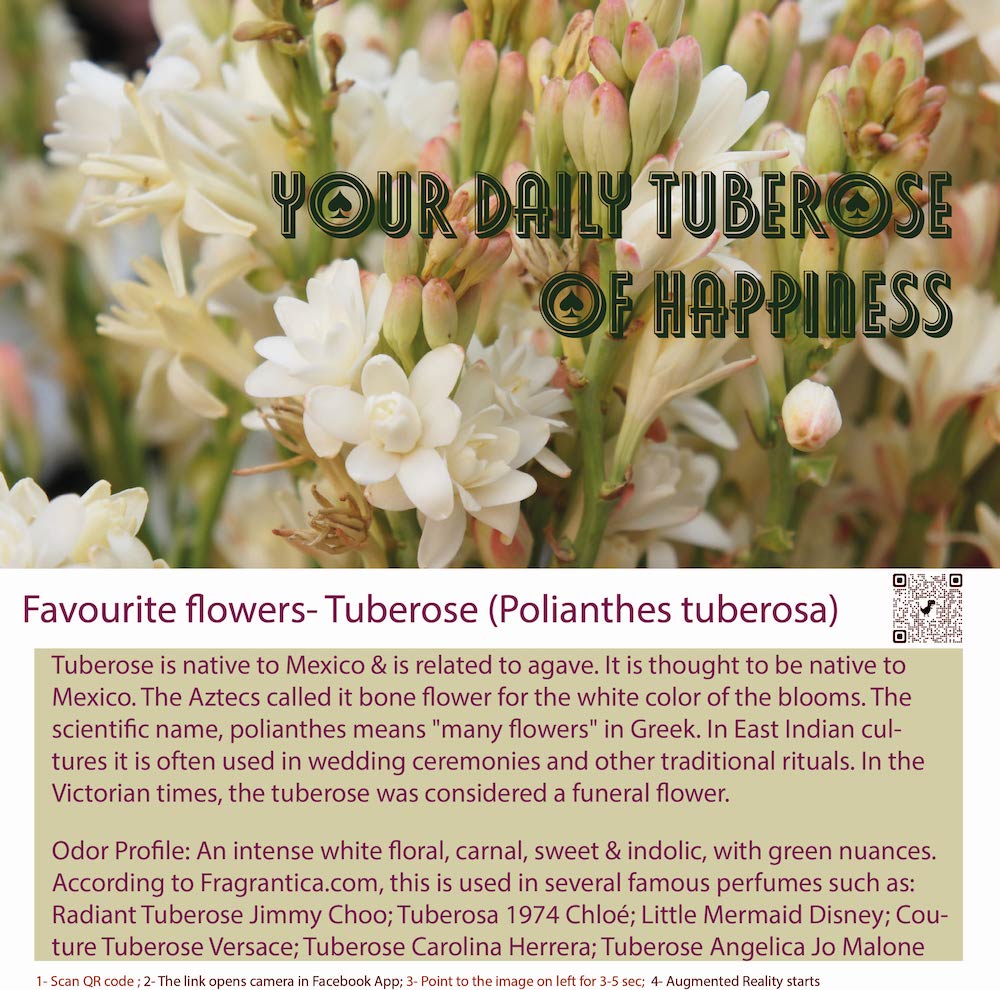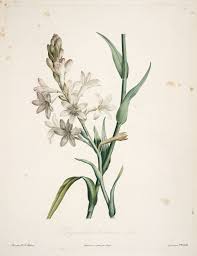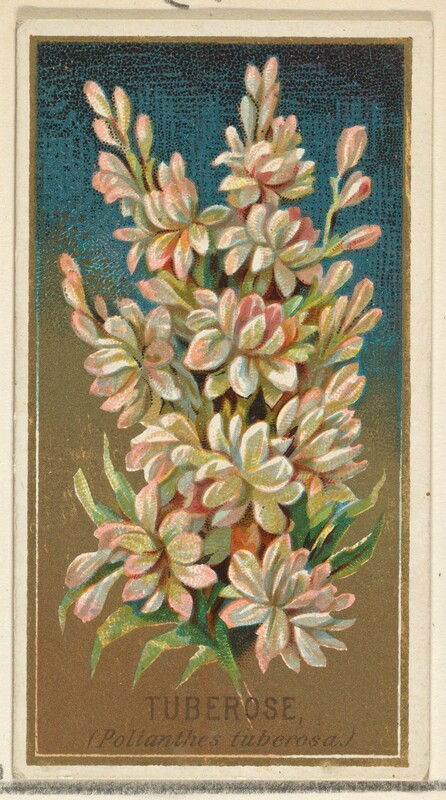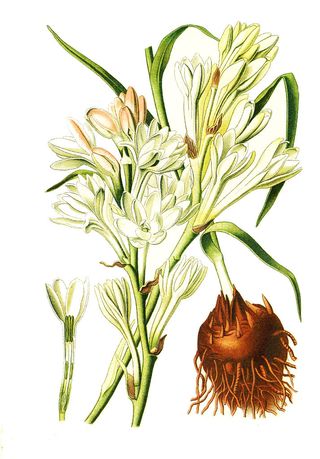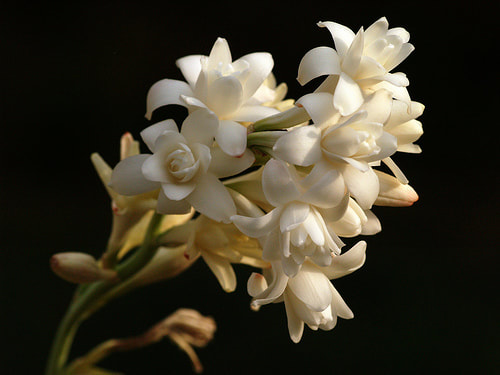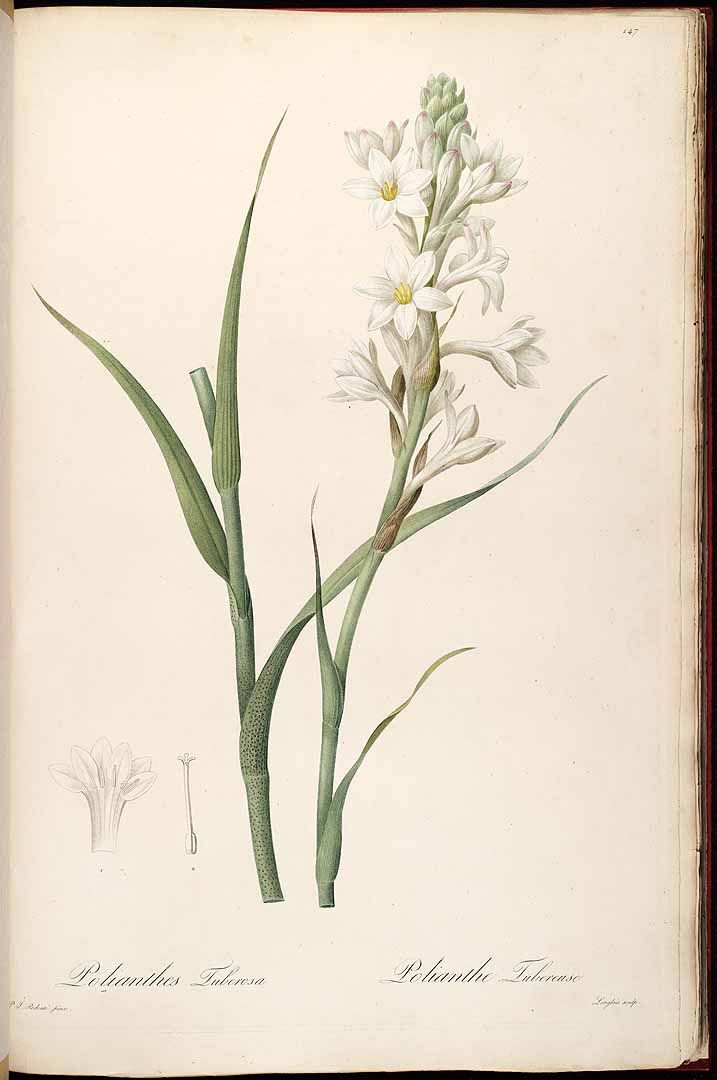Scentopia Singapore: Aromatic Garden Treasures
The Allure of Tuberose: A Fragrant Marvel with Fascinating Uses and History
Tuberose, scientifically known as Polianthes tuberosa, is a magnificent flower renowned for its enchanting fragrance and captivating appearance. Revered for centuries in various cultures, tuberose has found its way into the world of perfumery, aromatherapy, and traditional medicine, leaving a trail of mesmerized admirers in its wake.
Historical Significance: Tuberose holds a rich history that dates back to ancient times. Native to Central America, the flower is believed to have been cultivated by the Aztecs for its intoxicating scent. Tuberose made its way to Europe in the 16th century, where it quickly gained popularity as a prized ornamental and fragrant flower. Its name, "tuberose," is derived from the Latin word "tuberosa," which means "tuberous" or "swollen," referring to the bulb-like root structure.
Perfumes and Fragrance: Tuberose's fragrance is its most celebrated attribute, and it is considered one of the most captivating and sensual scents in the floral kingdom. The extraction of tuberose essential oil is a complex process that involves solvent extraction or enfleurage of the flowers. The resulting oil, known as tuberose absolute, possesses a rich, sweet, and heady aroma. In perfumery, tuberose is often referred to as the "queen of the night" due to its intensely fragrant blossoms that emit an alluring scent during the night. Tuberose absolute is a highly valued ingredient in high-end perfumes, where it imparts a luxurious and romantic note. It is often used in floral and oriental fragrances, as well as in classic white floral compositions.
Therapeutic Oils: In aromatherapy, tuberose essential oil is treasured for its therapeutic benefits. The oil is known to have calming and mood-enhancing properties, making it effective in reducing stress, anxiety, and emotional tension. Tuberose oil is often used in aromatherapy massages and diffusers to create a soothing and relaxing atmosphere.
Traditional Medicine: In traditional medicine systems, tuberose has been used for its medicinal properties. The flowers and essential oil of tuberose are believed to have anti-inflammatory and analgesic effects. Tuberose extracts have been used in traditional herbal remedies for various ailments, such as skin irritations and headaches.
Culinary Uses: Unlike some other fragrant flowers, tuberose is not commonly used in culinary creations. Its intense and exotic fragrance is primarily valued for its sensory appeal in perfumes and aromatherapy.
Fun Crazy Facts: Tuberose has some intriguing and fun facts associated with it. The flower is often associated with love and sensuality, making it a popular choice for romantic occasions and wedding ceremonies. In some cultures, tuberose is believed to have aphrodisiac properties, enhancing feelings of love and passion. Additionally, tuberose is a vital component of the famous Hawaiian lei, a traditional garland made of fresh flowers, which is used to welcome visitors and celebrate special occasions. The presence of tuberose in a lei symbolizes the affection and hospitality of the giver.
Tuberose is a beguiling flower that has captured the hearts of many with its intoxicating fragrance and elegant appearance. Its esteemed status in the world of perfumery and aromatherapy is a testament to its captivating scent and therapeutic properties. The flower's rich history, cultural significance, and romantic associations only add to its allure, making tuberose a timeless symbol of beauty, sensuality, and well-being across the globe. Whether adorning a luxurious perfume or filling a room with its sweet aroma, tuberose continues to captivate and enthrall, leaving a trail of fascination and admiration wherever it blooms.
Tuberose, scientifically known as Polianthes tuberosa, is a magnificent flower renowned for its enchanting fragrance and captivating appearance. Revered for centuries in various cultures, tuberose has found its way into the world of perfumery, aromatherapy, and traditional medicine, leaving a trail of mesmerized admirers in its wake.
Historical Significance: Tuberose holds a rich history that dates back to ancient times. Native to Central America, the flower is believed to have been cultivated by the Aztecs for its intoxicating scent. Tuberose made its way to Europe in the 16th century, where it quickly gained popularity as a prized ornamental and fragrant flower. Its name, "tuberose," is derived from the Latin word "tuberosa," which means "tuberous" or "swollen," referring to the bulb-like root structure.
Perfumes and Fragrance: Tuberose's fragrance is its most celebrated attribute, and it is considered one of the most captivating and sensual scents in the floral kingdom. The extraction of tuberose essential oil is a complex process that involves solvent extraction or enfleurage of the flowers. The resulting oil, known as tuberose absolute, possesses a rich, sweet, and heady aroma. In perfumery, tuberose is often referred to as the "queen of the night" due to its intensely fragrant blossoms that emit an alluring scent during the night. Tuberose absolute is a highly valued ingredient in high-end perfumes, where it imparts a luxurious and romantic note. It is often used in floral and oriental fragrances, as well as in classic white floral compositions.
Therapeutic Oils: In aromatherapy, tuberose essential oil is treasured for its therapeutic benefits. The oil is known to have calming and mood-enhancing properties, making it effective in reducing stress, anxiety, and emotional tension. Tuberose oil is often used in aromatherapy massages and diffusers to create a soothing and relaxing atmosphere.
Traditional Medicine: In traditional medicine systems, tuberose has been used for its medicinal properties. The flowers and essential oil of tuberose are believed to have anti-inflammatory and analgesic effects. Tuberose extracts have been used in traditional herbal remedies for various ailments, such as skin irritations and headaches.
Culinary Uses: Unlike some other fragrant flowers, tuberose is not commonly used in culinary creations. Its intense and exotic fragrance is primarily valued for its sensory appeal in perfumes and aromatherapy.
Fun Crazy Facts: Tuberose has some intriguing and fun facts associated with it. The flower is often associated with love and sensuality, making it a popular choice for romantic occasions and wedding ceremonies. In some cultures, tuberose is believed to have aphrodisiac properties, enhancing feelings of love and passion. Additionally, tuberose is a vital component of the famous Hawaiian lei, a traditional garland made of fresh flowers, which is used to welcome visitors and celebrate special occasions. The presence of tuberose in a lei symbolizes the affection and hospitality of the giver.
Tuberose is a beguiling flower that has captured the hearts of many with its intoxicating fragrance and elegant appearance. Its esteemed status in the world of perfumery and aromatherapy is a testament to its captivating scent and therapeutic properties. The flower's rich history, cultural significance, and romantic associations only add to its allure, making tuberose a timeless symbol of beauty, sensuality, and well-being across the globe. Whether adorning a luxurious perfume or filling a room with its sweet aroma, tuberose continues to captivate and enthrall, leaving a trail of fascination and admiration wherever it blooms.
To experience augmented reality, please open the Facebook-app using QR code and point to the image below
Experience the Elegance of Tuberose Fragrance
Mexico's native plant, Agave amica, formerly also known as Polianthes tuberosa is commonly called the tuberose. It is a perennial plant and its extracts are highly regarded as a note in perfumery. Now this is widely grown as an ornamental plant for its beauty.
Tuberose (Polianthes tuberosa) is a perennial plant that is native to Mexico and Central America. It is grown for its highly fragrant flowers, which are used in perfumes and floral arrangements. The plant has long, pointed leaves and produces spikes of white, waxy flowers. Tuberose is typically propagated by bulb division and can be grown in a variety of soils, as long as they are well-draining. It is a popular garden plant in warm climates, but can also be grown as a potted plant in cooler regions.
Tuberose (Polianthes tuberosa) is a perennial plant that is native to Mexico and Central America. It is grown for its highly fragrant flowers, which are used in perfumes and floral arrangements. The plant has long, pointed leaves and produces spikes of white, waxy flowers. Tuberose is typically propagated by bulb division and can be grown in a variety of soils, as long as they are well-draining. It is a popular garden plant in warm climates, but can also be grown as a potted plant in cooler regions.
Tuberose Essential Oil Blends: Nature's Aromatic Gift
It is no longer found in the wild, probably as a result of domestication by the Aztecs. It is currently grown in many tropical and temperate countries including Singapore.
Tuberose fun facts
Tuberose fun facts
- Tuberose is also known as "Lady of the Night" because of its strong, sweet fragrance that is most noticeable at night.
- The flowers of the Tuberose plant are used to make perfumes and scented oils.
- Tuberose is a symbol of pure love and is often used in bridal bouquets and wedding decorations.
- The plant is also used in traditional medicine in some cultures to treat anxiety, insomnia, and other ailments.
- Tuberose is a member of the agave family, which also includes plants like yucca and century plant.
- The bulbs of the Tuberose plant are edible and can be cooked like potatoes.
- The Tuberose plant can be propagated by bulb division, which involves dividing the bulbs of the plant and replanting them.
- The Tuberose blooms in the summer, and it's the perfect time to enjoy their sweet fragrance, this is why the plants are often used in outdoor gardens and patios.
- Tuberose is a tropical plant and is not tolerant of frost, it prefers a warm and sunny climate.
- Tuberose plants can grow up to 3 feet tall and will produce spikes of white, waxy flowers.
Unveiling the Beauty of Tuberose Fragrance
Tuberose fragrance has been distilled for use in perfumery since the 17th century, when the flower was first transported to Europe. French Queen Marie Antoinette used a perfume called Sillage de la Reine, also called Parfum de Trianon, containing tuberose, orange blossom, sandalwood, jasmine, iris and cedar.
It remains a popular floral note for perfumes, but it generally used in moderation and mixed with other smells because the essence is overpowering and can become sickly sweet.
The aroma of Tuberose is primarily composed of several volatile organic compounds (VOCs) including:
It remains a popular floral note for perfumes, but it generally used in moderation and mixed with other smells because the essence is overpowering and can become sickly sweet.
The aroma of Tuberose is primarily composed of several volatile organic compounds (VOCs) including:
- Phenyl ethyl alcohol (PEA) - responsible for the sweet, floral and jasmine-like aroma.
- Indole - responsible for the spicy and animalistic undertone of the aroma.
- cis-Jasmone - responsible for the green, fresh and floral aroma.
- Benzyl acetone - responsible for the floral, sweet and fruity aroma.
- cis-Rose oxide - responsible for the floral, rose-like aroma.
- Geraniol - responsible for the floral, rosy and lemony aroma.
- Linalool - responsible for the floral and lavender-like aroma.
- Farnesol - responsible for the floral and citrus-like aroma.
Creating Exquisite Perfumes from Tuberose Flowers
In India and Bangladesh they are widely used in making flower garlands which are offered to the gods or used as wedding ornaments. While once associated with funerals, it is now used in floral arrangements for other occasions. In Indonesia, tuberose flowers are also used in cooking.
Tuberose in Art:
Tuberose in Art:
- "Tuberoses" by Pierre-Auguste Renoir (1881) - This still life painting depicts a vase of Tuberoses in a lush, naturalistic setting. The painting is considered one of Renoir's masterpieces and is known for its lively brushwork and vibrant color palette.
- "Bouquet of Tuberoses" by Henri Fantin-Latour (1876) - This still life painting depicts a bouquet of Tuberoses in a vase. The painting is known for its use of light and color and its representation of the Tuberoses as a symbol of beauty and sensuality.
- "Flowers in a Vase" by Édouard Manet (1882) - This still life painting depicts a vase of flowers, including Tuberoses, arranged on a table. The painting is known for its use of light and color and its representation of the Tuberoses as a symbol of beauty and sensuality.
- "Bouquet of Flowers" by Vincent van Gogh (1888) - This painting depicts a bouquet of flowers, including Tuberoses, arranged in a vase. The painting is known for its use of vibrant colors and thick brushstrokes, which create a sense of movement and energy.
- "A Vase of Flowers" by Claude Monet (1880) - This painting depicts a vase of flowers, including Tuberoses, arranged on a table. The painting is known for its use of light and color and its representation of the Tuberoses as a symbol of beauty and sensuality.
Crafting Nature's Essence: Tuberose Essential Oils
The word Rajnigandha in hindi loosely translates as `fragrant one of the night,' and that's exactly when this beautiful plant is at its best.
In India, the tuberoses are used frequently in weddings as garland and decorations. In Iran, the tuberoses’ oil is used to make attars. In Hawaii tuberoses incorporated into leis.
Tuberose has been a popular subject in art and culture for centuries. The plant's distinctive and heady fragrance, as well as its association with love and sensuality, has made it a popular inspiration for artists, poets, and writers.
In India, the tuberoses are used frequently in weddings as garland and decorations. In Iran, the tuberoses’ oil is used to make attars. In Hawaii tuberoses incorporated into leis.
Tuberose has been a popular subject in art and culture for centuries. The plant's distinctive and heady fragrance, as well as its association with love and sensuality, has made it a popular inspiration for artists, poets, and writers.
- In literature, Tuberose is often used as a symbol of desire and sensuality. For example, in the novel "The Scent of Water" by Elizabeth Goudge, the Tuberose plant is used to represent the protagonist's longing for love.
- In art, Tuberose is often depicted in paintings and drawings as a symbol of beauty and sensuality. For example, the famous French painter Pierre-Auguste Renoir painted a still life of a vase of Tuberoses in 1881.
- In horticulture, Tuberose is often used in gardens and flower arrangements as a symbol of beauty and elegance. The flowers are used in many traditional wedding ceremonies, and are also used to create garlands and posies.
- In religion, Tuberose is often used in Hindu and Buddhist ceremonies as an offering to the gods. The flowers are considered to be sacred and are used to create garlands and posies to be offered to the deity.
- In perfumery, Tuberose is often used as a note in perfumes and colognes. Its sweet and heady aroma is considered to be sensual and alluring.
The Artistry of Blending Scents: Tuberose Perfumery
There are many perfumes and colognes that feature Tuberose as a scent note. Some of the most famous and popular brands that use Tuberose in their fragrances include:
- Jo Malone - Tuberose Angelica is a popular scent from the brand that features Tuberose as the main note.
- Tom Ford - Tuberose Absolute is a luxurious scent from the brand that features Tuberose as the main note.
- Le Labo - Tuberose 46 is a popular scent from the brand that features Tuberose as the main note.
- Frederic Malle - Carnal Flower is a popular scent from the brand that features Tuberose as the main note.
- Byredo - Gypsy Water is a popular scent from the brand that features Tuberose as one of the notes.
- Dior - J'adore is a popular scent from the brand that features Tuberose as one of the notes.
- Chanel - No.5 is a classic scent from the brand that features Tuberose as one of the notes.
- Yves Saint Laurent - Black Opium is a popular scent from the brand that features Tuberose as one of the notes.
Join Scentopia, Sentosa's latest tourist attraction wonderful orchid scent crafting, fragrance tour, bridal shower or corporate team building which includes perfume making onsite and offsite, beach activities and more. We also serve primary school learning journey, secondary students and pupil on industrial excursions. Know more about our orchids perfume bar or therapeutic orchid scents and other wellness aromas. Conatct Perfume workshop or book a scent crafting session here.

